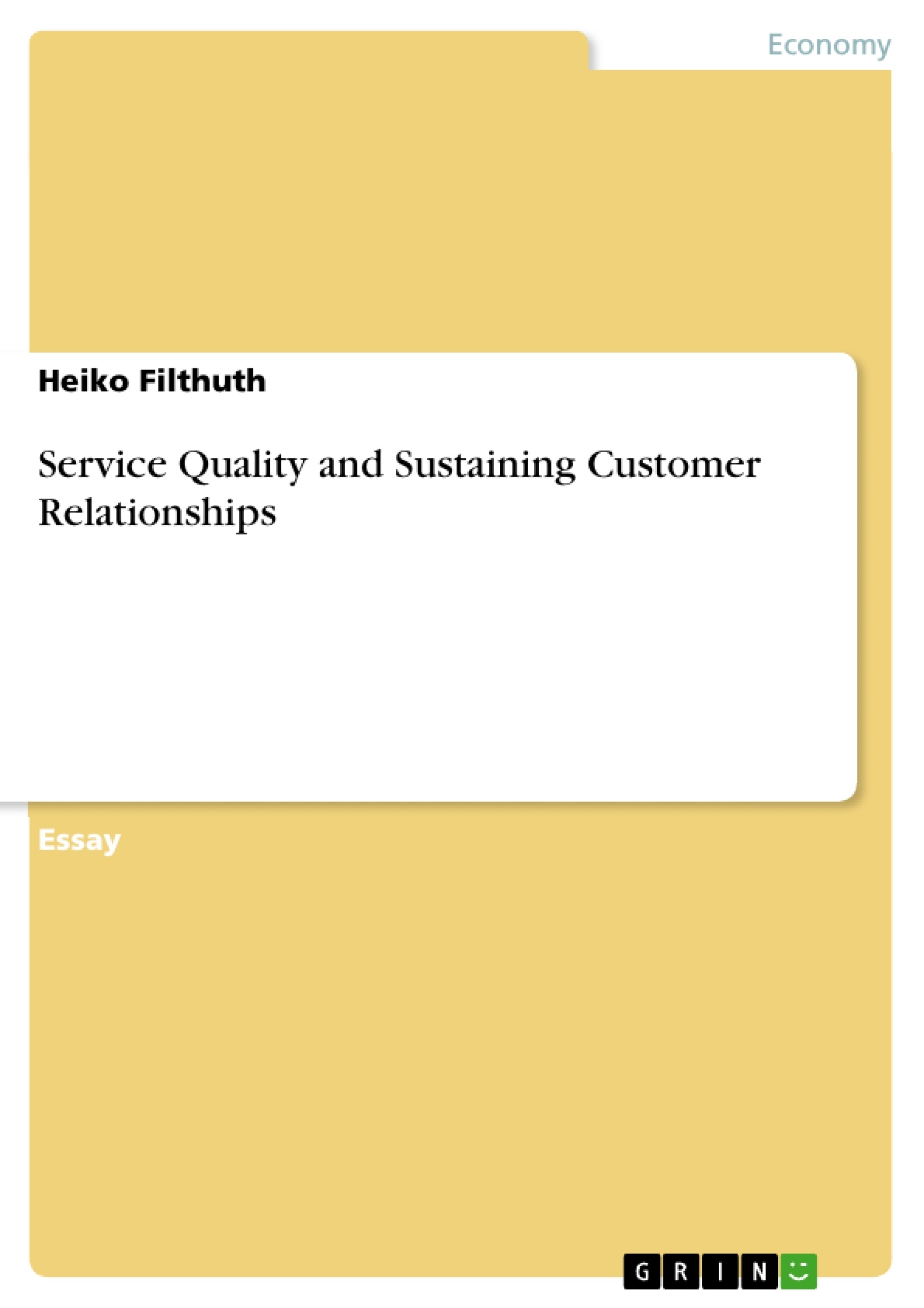This essay critically discusses the academic literature on service quality models before turning to sustaining customer relationships. In its third paragraph, the connections between service quality and customer relationships are discussed and business situations in which service quality models may sustain customer relationships are considered.
Service quality and sustaining customer relationships are interrelated, as both the academic theory and some featured business examples show. Comparing the SERVQUAL model with the 4Ps and 4Cs based on three core statements underline this relationship. Examples from three different industries show practical benefits for both suppliers and customers of products and services.
Table of Contents
- Introduction
- Service Quality Models
- Donabedian
- Grönroos
- SERVQUAL or GAP-model
- Total Quality Management (TQM)
- CLOUDQUAL
- Sustaining Customer Relationships
- Loyalty
- Relationship
- Value of the customer
- Process and costs
- Evaluating the Connection Between Service Quality Models and Customer Relationship
- Statement One
- Statement Two
- Statement Three
- Examples on Service Quality Sustaining Customer Relationships
Objectives and Key Themes
This essay aims to critically discuss the relationship between service quality and sustaining customer relationships. It compares different service quality models with the marketing mix and explores how these models can be beneficial for building long-term customer relationships.
- Service quality models and their impact on customer perception and reception.
- The relationship between service quality, customer loyalty, and profitability.
- The importance of individual customer focus in sustaining customer relationships.
- The role of marketing mix and customer relationship management (CRM) in building and sustaining customer relationships.
- Practical examples of how service quality models can be used to sustain customer relationships in different industries.
Chapter Summaries
The introduction outlines the importance of service quality in today's business landscape and introduces the concepts of customer perception and reception of service quality. The chapter on service quality models examines different models, including Donabedian's structural, processual, and outcome approach, Grönroos's customer-centric model, the SERVQUAL or GAP-model, Total Quality Management (TQM), and CLOUDQUAL. It highlights the strengths and weaknesses of each model and discusses their application in various industries.
The chapter on sustaining customer relationships delves into four key areas: loyalty, relationship, value of the customer, and process and costs. It discusses the importance of building customer loyalty, fostering strong relationships, and understanding the customer's value. It also explores the role of CRM and cost management in sustaining customer relationships.
The chapter evaluating the connection between service quality models and customer relationship outlines three core statements. It shows how the principles of individual customer focus, customer loyalty, and profitability are reflected in different service quality models and their application in customer relationship management.
Keywords
The key focus of this essay is on the relationship between service quality and sustaining customer relationships. It explores various service quality models, customer relationship management (CRM), customer loyalty, profitability, marketing mix, and their applications in different industries. Important concepts include customer perception, customer reception, value of the customer, and the role of individual customer focus in sustaining relationships.
- Quote paper
- Heiko Filthuth (Author), 2016, Service Quality and Sustaining Customer Relationships, Munich, GRIN Verlag, https://www.grin.com/document/541354



